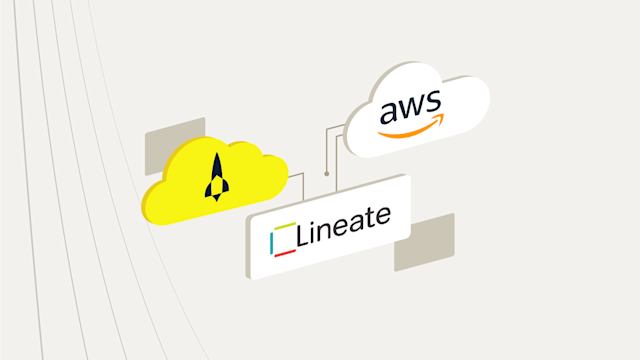What is customer targeting?
Explore the fundamentals of customer targeting, including behavioral targeting, real-time targeting, and personalized advertising, and how businesses can enhance engagement and drive better customer experiences.
Customer targeting (also known as user targeting) precisely identifies and engages specific segments of a user base for effective marketing efforts and product offerings. It involves analyzing user behavior and engagement to create effective targeting rules that cater to distinct customer needs. By understanding and segmenting customers based on their actions, preferences, and interactions, businesses tailor their strategies to meet customer expectations better and drive engagement.
Customer engagement is a critical aspect of this process. It involves creating touchpoints and experiences that resonate with users, encouraging them to interact more frequently with the brand. Based on these insights, targeting rules are then developed, allowing businesses to deliver content and offers relevant to each user segment. This strategic approach ensures that marketing efforts are not wasted on uninterested audiences but rather focused on those most likely to buy the product.
Behavioral targeting
A company could track user behavior on its website to identify which products customers frequently view but do not purchase. This process is not just about capturing attention but also about fostering meaningful interactions that lead to long-term customer relationships.
Behavioral targeting lets businesses communicate with customers at the right time with the right message. For example, an online retailer can send an abandoned cart email to a customer who added products to their shopping cart but did not check out. With incentives such as free shipping or a limited-time discount, the retailer can encourage the customer to buy.
With behavioral triggers, businesses nurture leads through their buying journey, making the engagement feel more relevant and less intrusive. Personalized behavioral targeting is the key to cutting through the noise of generic ads.
Expanding your strategy with audience targeting
To unlock the full value of customer targeting, marketers need to translate raw customer data into clearly defined audience groups and then match each group to the best channel, message, and moment. This expanded practice, often called audience targeting, starts by sizing the target market, then drilling down to micro-segments based on behavioral signals. When these segments receive truly personalized ads, brands see higher user engagement and stronger return on spend.
Effective ad targeting hinges on combining first-party profiles with privacy-safe third-party insights, so each impression serves the most relevant creative. Well-tuned targeted advertising engines do more than just place targeted ads in front of likely buyers; they also suppress ads for users who have already converted, maximize frequency for high-value look-alikes, and dynamically adjust bids as fresh events stream in. By closing the loop between live behavior and media execution, audience targeting lifts conversion efficiency and ensures budgets are focused where they matter most.
Why target customers?
Focusing on specific customers gets them more involved, builds loyalty, and improves predictability. With targeted strategies, businesses create more meaningful interactions that resonate with their target audience.
Your engagement will increase
Creating a target audience lets businesses tailor their offerings to specific user segments. By understanding customer experience through detailed data analysis, businesses create personalized engagements. This approach not only captures attention but also fosters deeper connections. For instance, when a company identifies a customer segment interested in eco-friendly products, it can tailor its messaging to highlight sustainability, making the products more appealing.
Your customers will feel more cared for and satisfied
Personalization signals to customers that they are valued. When businesses employ user segments to deliver content or opportunities that align with individual preferences, customers are happier. A persona-driven approach means communications feel relevant and timely, which also makes them happier. This could be as simple as recommending products based on past purchases or offering loyalty rewards that reflect a customer’s unique preferences.
You can better predict future customer behavior and find similar customers
By analyzing user behavior, businesses forecast future actions and trends. This predictability helps them craft strategies that meet customer needs. Additionally, understanding existing customer segments helps businesses identify and target potential new customers with similar profiles. This predictive power leads to more effective marketing campaigns and product developments, so resources are allocated efficiently and effectively.
Curious about how AI is revolutionizing customer targeting?
Learn more about the future of personalization with our article, The future of AI-driven personalization. See how artificial intelligence is changing the way businesses connect with customers by delivering hyper-personalized experiences that drive growth.
How does customer targeting work?
Collecting and unifying data in real time
The process begins with data ingestion, where various data sources such as website interactions, social media activity, and purchase history are aggregated. Identity resolution follows, which involves linking this data to create a unified customer profile. This real-time integration means customer profiles are updated as new data comes in, reducing the time needed to take advantage of the new information and making targeting efforts more effective.
Creating dynamic user segments
Once data is consolidated, the customer software platform creates groups of users based on behavior or attributes that change over time. These segments categorize users according to shared attributes or behaviors, such as engagement frequency or purchase patterns. This segmentation allows for more personalized marketing strategies, adapting to changes in user behavior and preferences as they happen.
Delivering contextual experiences across channels
The final step is omnichannel delivery, where personalized experiences are activated and delivered across various platforms, including email, mobile apps, and social media. This ensures that the messaging is consistent and relevant, regardless of where the customer interacts with the brand. Through this approach, businesses provide tailored interactions that resonate with individual users.
Real-time targeting
Real-time targeting lets businesses adapt to customer behavior more quickly, delivering relevant messages, offers, or content as soon as insights are available. This is essential for personalizing experiences so marketing efforts are aligned with current customer needs. To do this, systems must process data quickly and scale efficiently to handle high volumes without delay.
Real-time targeting hinges on milliseconds, where speed is crucial. This requires sub-millisecond read/write times so data is processed and delivered without delay, and businesses can act on fresh insights immediately. Systems need to scale horizontally to handle increasing data volumes without compromising speed. This scalability means any spike in demand or data influx is managed efficiently for smooth performance.
Handling petabytes of data requires translating vast amounts of information into actionable insights. This involves selecting the right data paths, hot paths for instantaneous processing, and cold paths for archival storage, for the best results in both speed and data retrieval. A profile store is crucial here, maintaining persistent, low-latency profiles that allow for quick access and updates to user data as needed.
Ethical and privacy considerations in customer targeting
Consent, transparency, and trust are vital in customer targeting. Users must have a clear understanding of how their data is collected, processed, and used. Building trust requires obtaining explicit consent and maintaining transparency throughout the data lifecycle. This approach not only fosters user confidence but also aligns with ethical standards.
Regulations such as GDPR, CCPA, and DMA dictate the legal landscape of customer targeting. These frameworks aim to protect individual rights by setting guidelines for data handling, including user consent and data protection measures. Compliance is not optional; it's a legal obligation that also helps businesses avoid hefty fines and reputational damage.
Creating privacy-by-design data architectures ensures that privacy considerations are embedded into every stage of product development. This proactive approach integrates data minimization, anonymization, and differential privacy techniques. By prioritizing privacy, organizations innovate while respecting user rights and adhering to evolving regulations.
Want to learn more about the future of customer targeting and how to overcome data limitations?
Check out our in-depth article, Cookies, IDs, and beyond: Navigating the future of data privacy and personalization. Discover how businesses are adapting to the evolving data privacy landscape and using innovative solutions to attract customers in a world beyond third-party cookies.
Measuring success and optimizing targeting strategies
Identifying metrics such as lift, average order value (AOV), retention, and churn is crucial for understanding the effect of customer targeting.
Lift measures the increase in desired outcomes, such as sales or engagement, due to targeting efforts.
AOV reflects the average revenue generated per transaction.
Retention and churn rates indicate customer loyalty and attrition, respectively. By focusing on these metrics, businesses make better decisions about their targeting strategies.
Experimentation frameworks such as A/B testing, multivariate testing, and holdout groups provide a structured approach to evaluating targeting strategies.
A/B testing involves comparing two versions of a campaign to determine which performs better.
Multivariate testing evaluates multiple variables simultaneously.
Holdout groups serve as control groups, helping to isolate the effects of targeting interventions. These frameworks let businesses test hypotheses, refine strategies, and get better outcomes.
Closing the feedback loop with real-time analytics is essential for continuous improvement. By monitoring performance data in real time, businesses can quickly identify trends, uncover insights, and make data-driven adjustments to their targeting strategies. Real-time analytics make quick changes easier and make it easier to see which marketing action led to a customer action or sale, so businesses remain responsive to changing customer behaviors and market conditions.
Effective targeting strategies require a results-oriented, data-driven approach. By focusing on key metrics, taking advantage of experimentation frameworks, and using real-time analytics, businesses improve their targeting efforts and get better outcomes. These practices mean organizations not only measure success but also continuously improve their targeting strategies for sustained growth.
Build your AI-ready targeting engine on Aerospike
If the ability to group users based on live data in less than a millisecond, in a way that sets you up for using AI-based agents, all while maintaining user privacy, is giving you ideas, then Aerospike is the infrastructure layer built for that kind of builder-led innovation. Our patented Hybrid Memory Architecture keeps billions of profile and embedding records available, and our active-active replication means the speed you promise in one region is the speed you deliver worldwide. Grab the free Community Edition, clone the real-time profile store repository, and prove to yourself in an afternoon that millisecond AI targeting isn’t just an aspiration but a code you commit to today.




